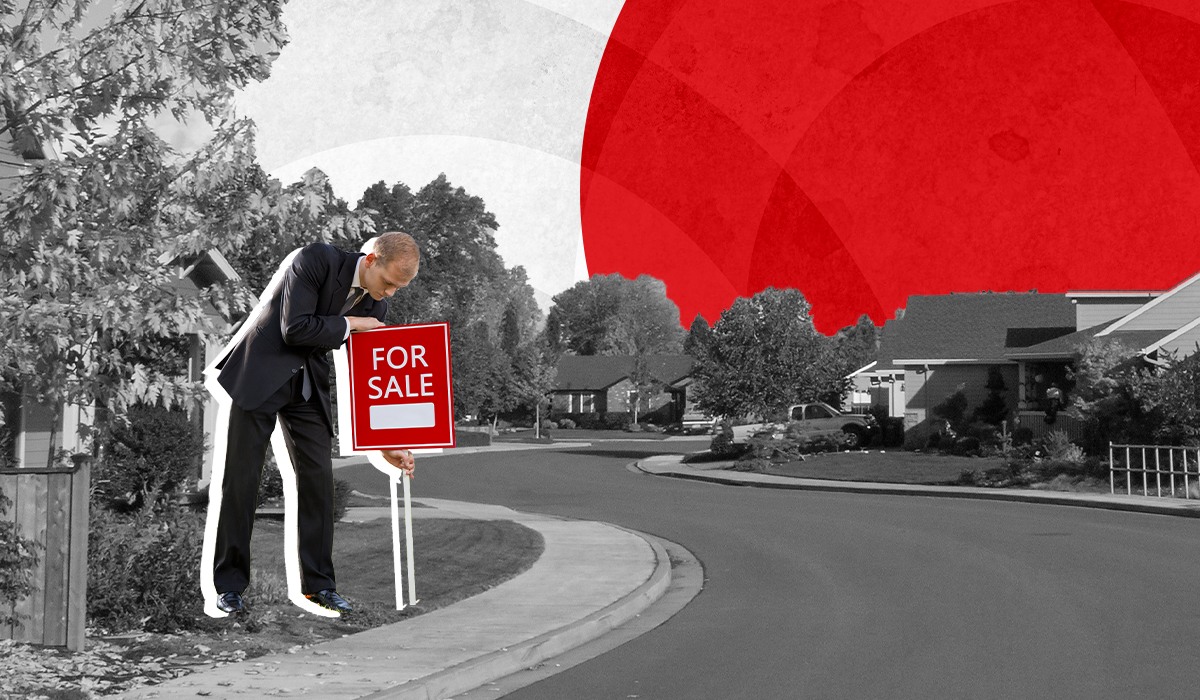Even with falling rates, the housing market is shaping up to be bad in Q4
The housing recession was in full swing in October. Existing home sales last month declined 5.9% from September to a seasonally adjusted annual rate of 4.43 million in October, and were down 28.4% year over year. That’s the largest year over year existing home sales decrease since 2007.
“More potential homebuyers were squeezed out from qualifying for a mortgage in October as mortgage rates climbed higher,” National Association of Realtors Chief Economist Lawrence Yun said in a statement. “The impact is greater in expensive areas of the country and in markets that witnessed significant home price gains in recent years.”
Both a pullback in demand and limited supply remain vexing problems for the housing market. Total housing inventory at the end of October was 1.22 million units, which was down 0.8% from both September and one year ago (1.23 million).
Unsold inventory sits at a 3.3-month supply at the current sales pace, up from 3.1 months in September and 2.4 months in October 2021.
“Inventory levels are still tight, which is why some homes for sale are still receiving multiple offers,” Yun said. “In October, 24% of homes received over the asking price. Conversely, homes sitting on the market for more than 120 days saw prices reduced by an average of 15.8%.”
The median existing-home price for all housing types in October was $379,100, up 6.6% from October 2021. Properties were on market an average of 21 days in October, up from 19 days in September and 18 days in October 2021. About two-thirds of homes sold last month were on the market for less than a month, according to NAR’s data.
The ranks of first-time homebuyers are shrinking – in October they were responsible for just 28% of sales, near historic lows.
Realtor.com’s October market trends report found that the largest year-over-year median list price growth occurred in Milwaukee (+34.5%), Miami (+25.1%) and Kansas City (+21.4%). Phoenix, the iBuyer capital of the world, reported the highest increase in the share of homes that had prices reduced compared to last year (+35.9 percentage points), followed by Austin (+31.2 percentage points) and Las Vegas (+24.4 percentage points).
As for the near-term future, don’t expect the good times to return.
“Fourth quarter sales in the U.S. will continue to be sluggish,” said Bright MLS Chief Economist Lisa Sturtevant. “For the year overall, sales are on track to be down 15% or more compared to a year ago, falling below the 5 million mark for the first time in nearly a decade.”
Although mortgage rates recently have fallen sharply on positive inflation data, the decline in rates is not enough to halt the housing market’s slide, Sturtevant said.
“Many prospective buyers are still taking a ‘wait-and-see’ approach to see if rates fall further. But another big constraint on the market is a lack of inventory, with new listings drying up as we head into the winter holidays.”
Added Zillow‘s senior economist Nicole Bachaud, “Recent downward movement in mortgage rates might provide some reprieve in the coming months, but with home values appearing to hold strong, affordability challenges remain top of mind.”


